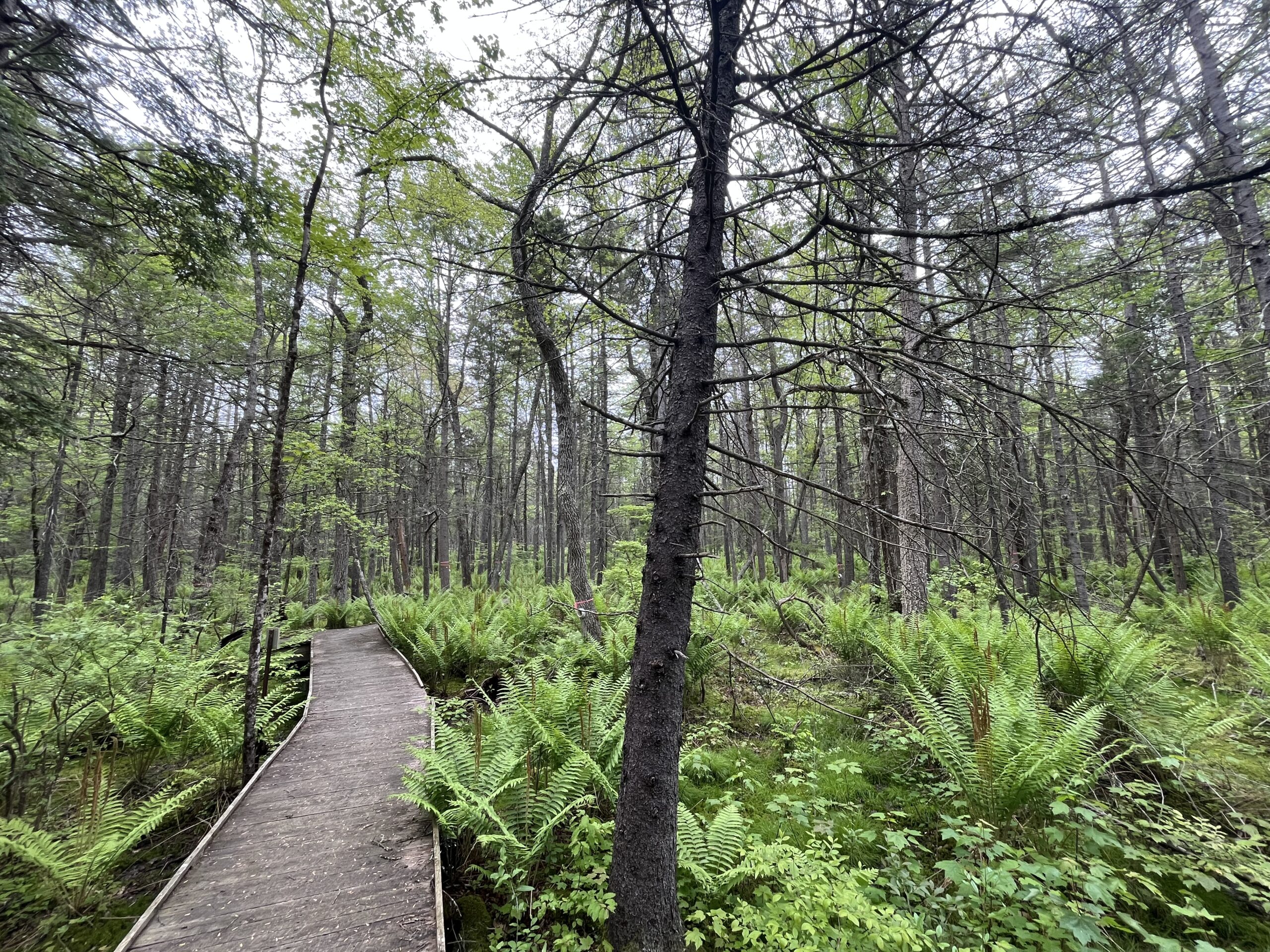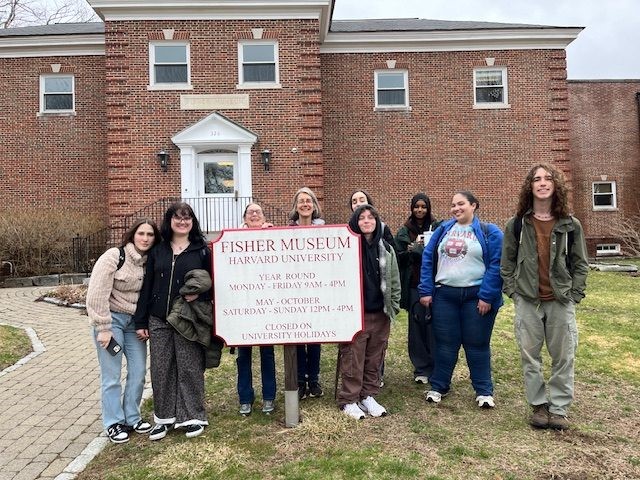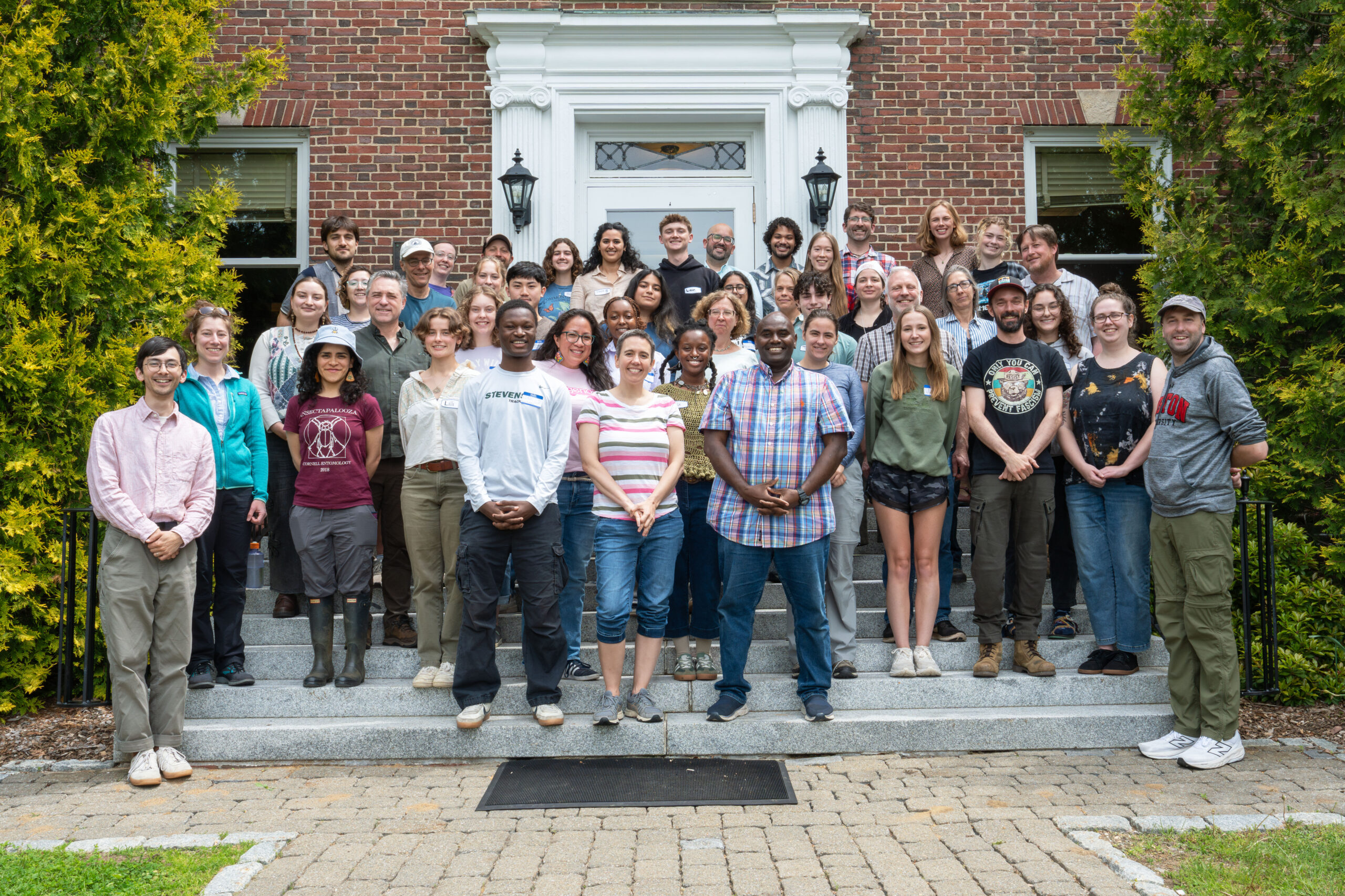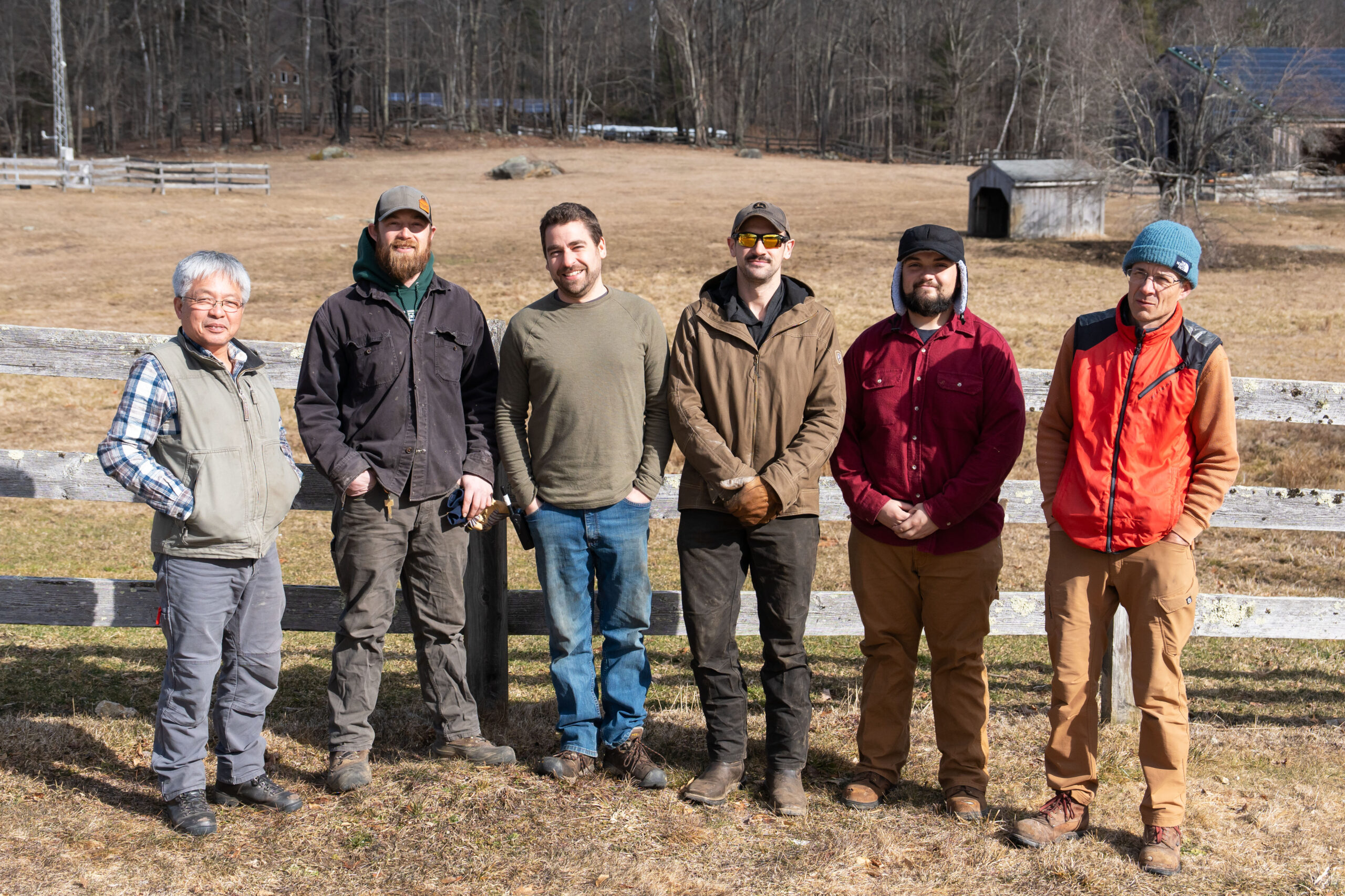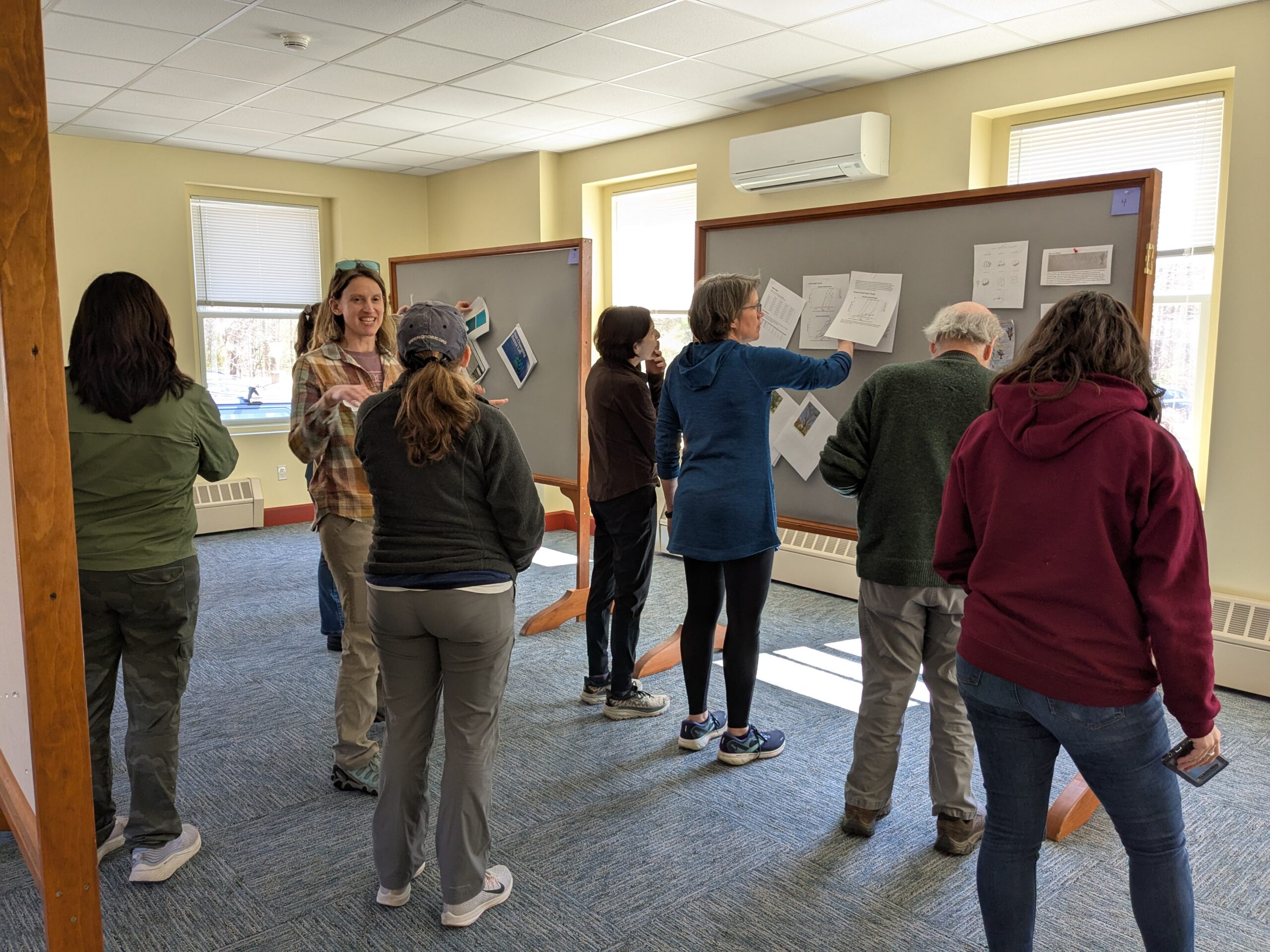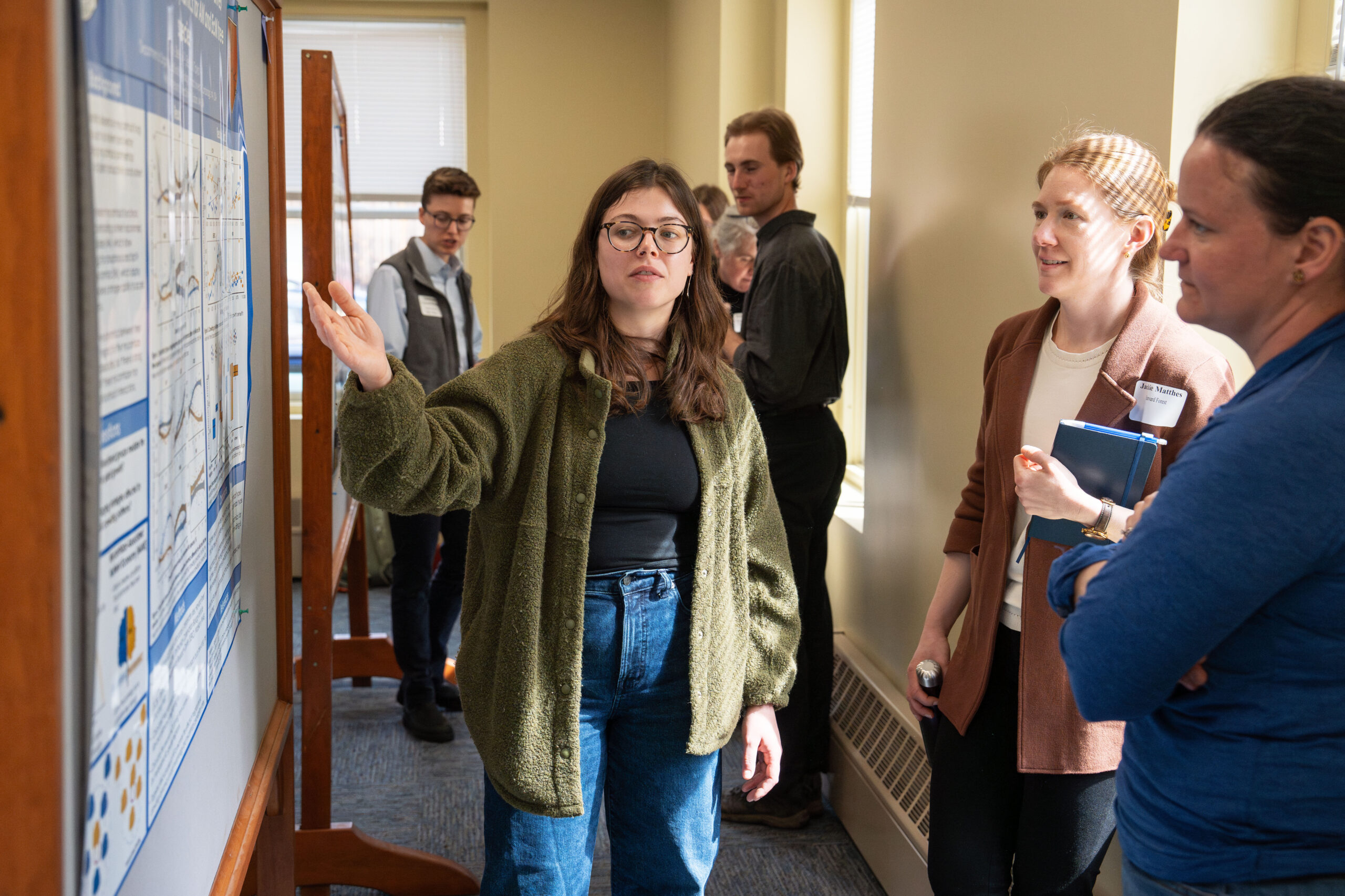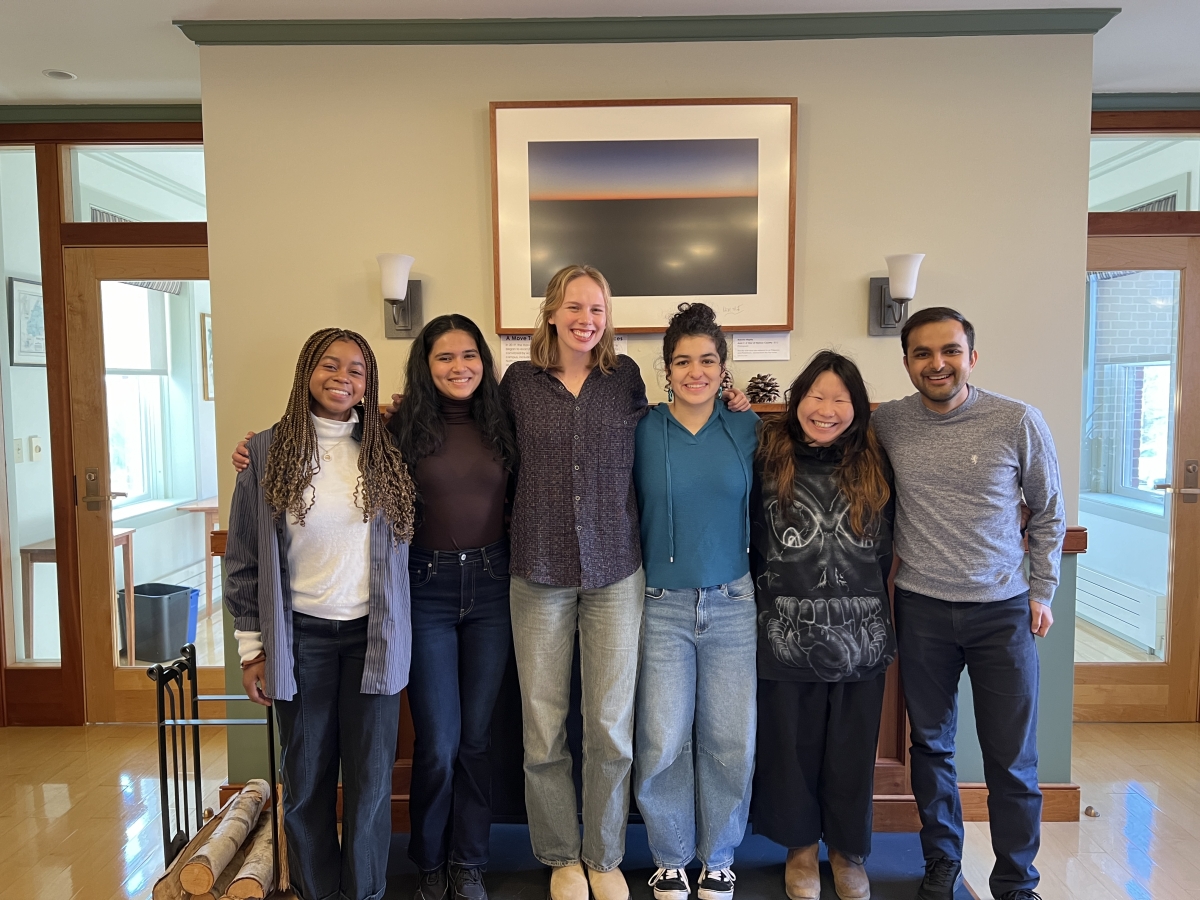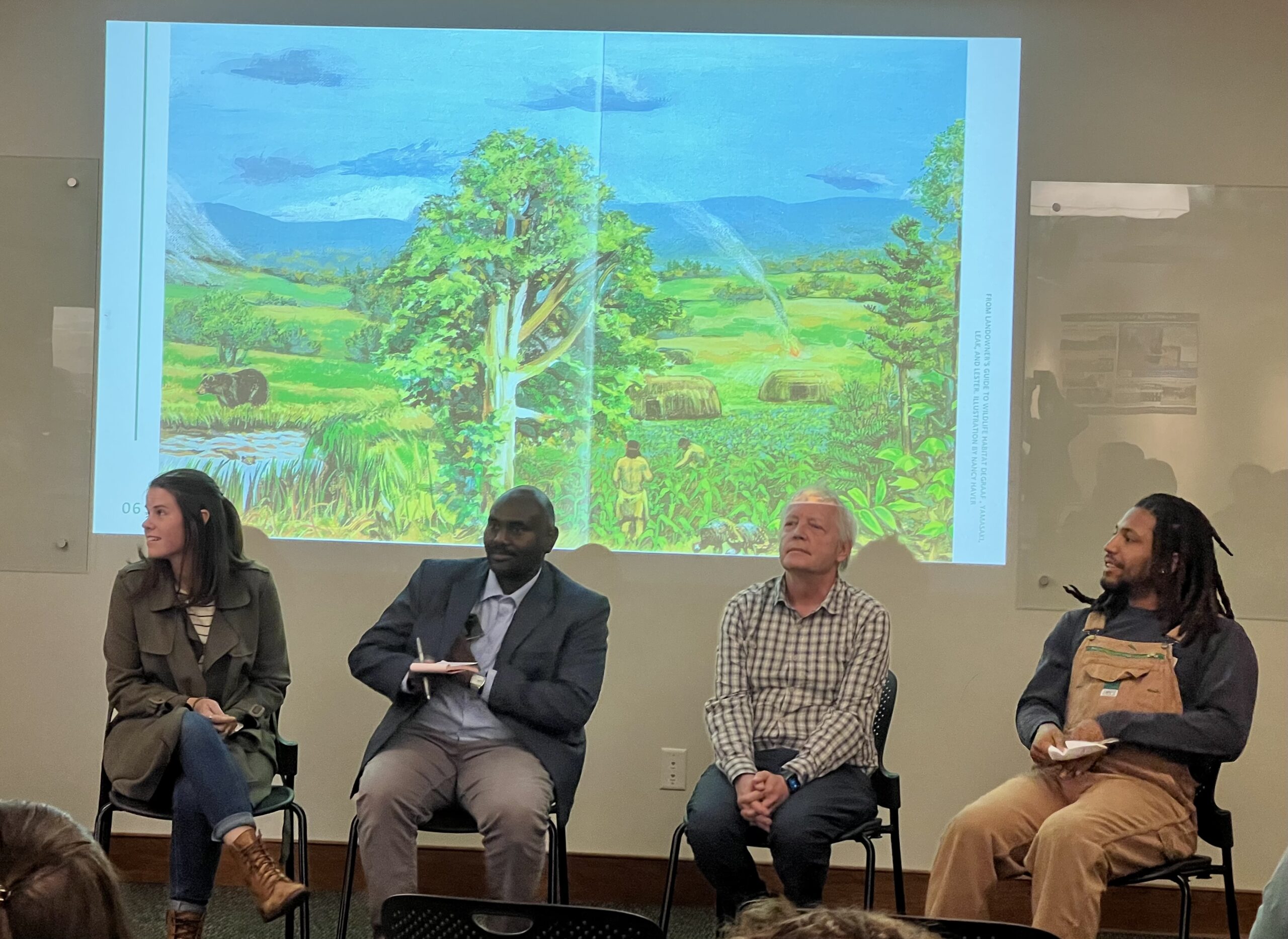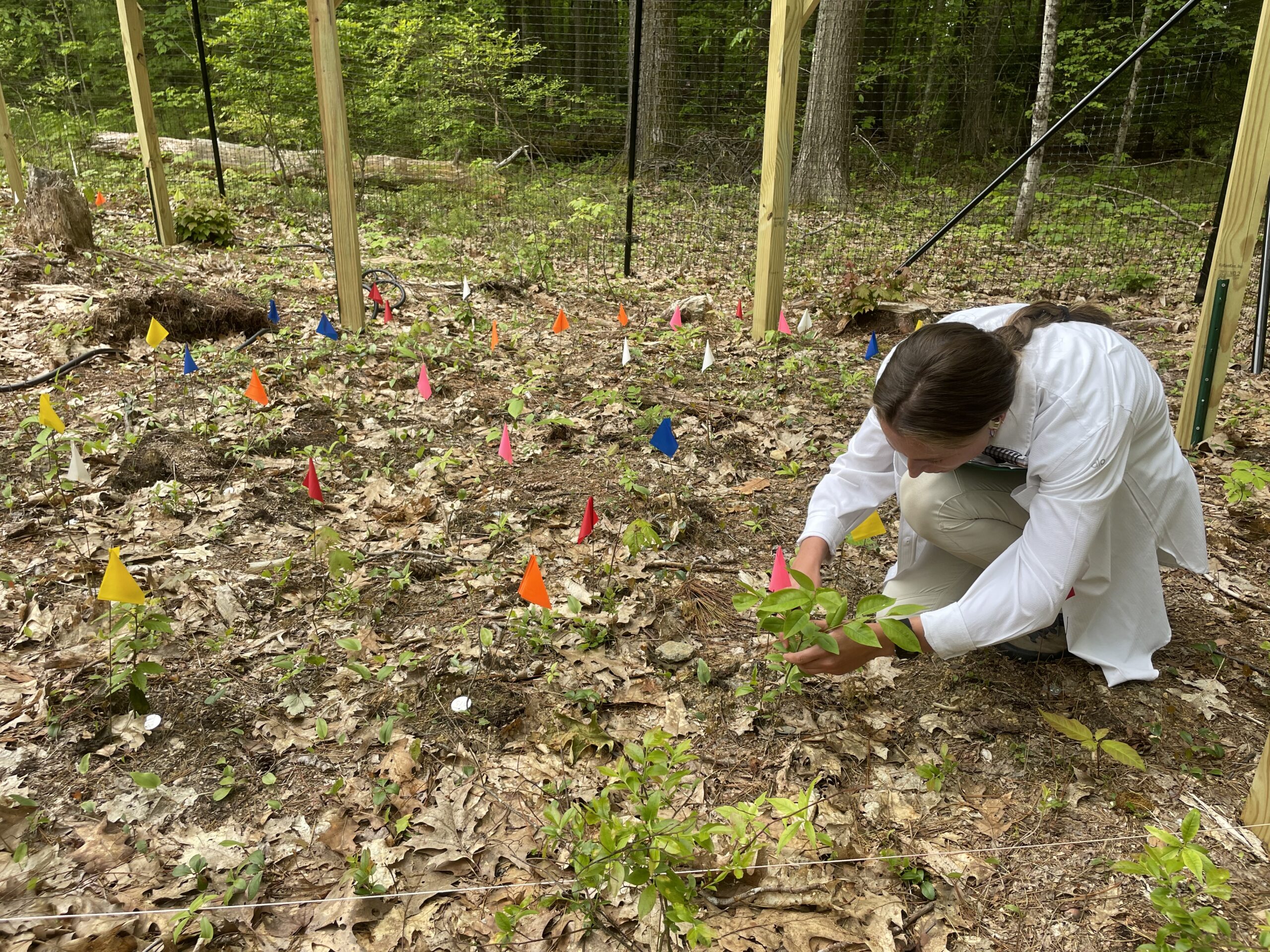
This spring, the rainy weather didn’t stop Benton Taylor from providing Harvard students with the opportunity to finish the design and implementation of his new experiment at Harvard Forest. Assistant Professor of Organismic and Evolutionary Biology (OEB) at Harvard University, Taylor first learned of Harvard’s 4,000-acre laboratory and classroom while an undergraduate down south. Now, he’s helping Harvard students take advantage of the world-class research station that he refers to as “one of the world’s ‘gold standard’ sites” for large-scale forest experiments.
A Three-Way Global Change Experiment
Taylor’s new study – Forest Responses to Warming Atmospheric CO2 and Drought (FORWARD) – is one of the first to examine how three major climate stressors (drought, warming, and increased carbon dioxide) interact in a forest ecosystem. Most previous studies have tested these factors individually. “The value here is the three-way interaction,” Taylor explains, “giving us a reasonably accurate picture of what future environmental responses will be in a forested setting.”
Biodiversity Belowground
Initially, Taylor considered conducting the roughly half-acre experiment – roughly the size of a Harvard Yard courtyard – at Harvard University’s Arnold Arboretum, where his lab is located. But despite Harvard Forest’s distance (roughly 90 minutes west of campus), the combination of cutting-edge experimental infrastructure and the full biodiversity of intact forest landscape at Harvard Forest created a unique opportunity for Taylor to assess biodiversity’s role in a forest’s ability to withstand stress. “Symbiotic relationships in the soil appear to be incredibly important for ecosystem response to global change,” says Taylor.
In Harvard Forest’s relatively natural setting, the unique presence of two key mycorrhizae – or belowground symbiotic associations between certain fungi and plant roots – may continue attracting researchers like Taylor who are interested in understanding biodiversity’s role in climate change.
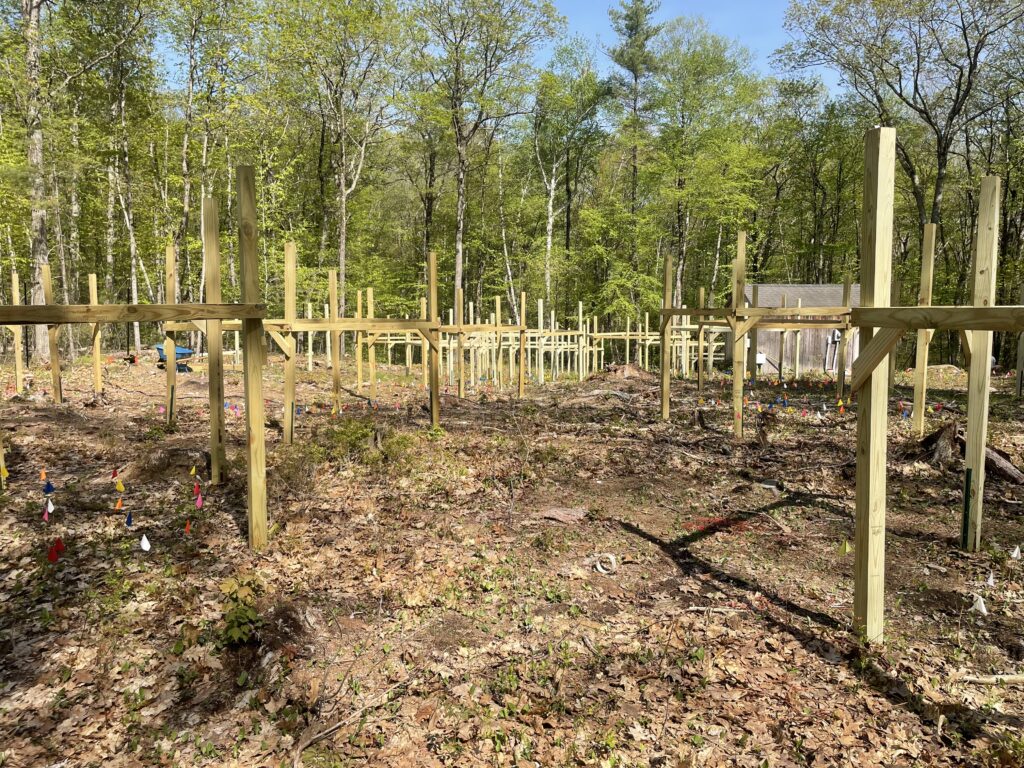
Leveraging Forest Infrastructure
The experiment uses 26 hexagonal plots, each four meters across, and is about a ten-minute walk from Harvard Forest’s main buildings. Taylor says the Forest’s existing infrastructure—power, a nearby shed, and gas lines—made it much easier to implement the design. Some plots will be fumigated with CO2 to mimic atmospheric conditions expected 75 years from now.
Expanding Student Opportunities
Leveraging the Harvard Forest Summer Research Program in Ecology, Taylor is giving students hands-on experience with real-world climate research. Eve Farrell, a doctoral student in Taylor’s lab at OEB, who first learned of Harvard Forest through a 2025 Harvard Winternship, is now mentoring Harvard College undergraduate Stella Charbonneau. A rising sophomore with a concentration in Integrative Biology, Charbonneau is among a growing number of Harvard students who are becoming more familiar with Harvard Forest.
Taylor’s connection to the Forest began nearly 20 years ago and nearly 1,000 miles away. Now teaching Experimental Design and Statistics for Ecology, he plans to bring students to the site this fall. A superb example of concepts taught in the classroom, the Harvard Forest is one of very few places where students can see a variety of unique methodological approaches in one setting (reconstructing hurricane damage and warming the soil, for example). “For a class that’s focused on how to design experiments and ecological studies, Harvard Forest is a one-stop shop for information.”
Internationally Renowned, Institutionally Underrecognized
Iconically known across the international ecological research community, the University’s own understanding of its unmatched research forest is surprisingly minimal. “People come to Harvard Forest because we have a long history of data, of manipulating the forest in big crazy ways that allow researchers to really understand how the forest operates in a way that perhaps no other sites come close to,” explains Taylor. “If I were thinking of the Mount Rushmore of biological field stations in the world, Harvard Forest is there.”
